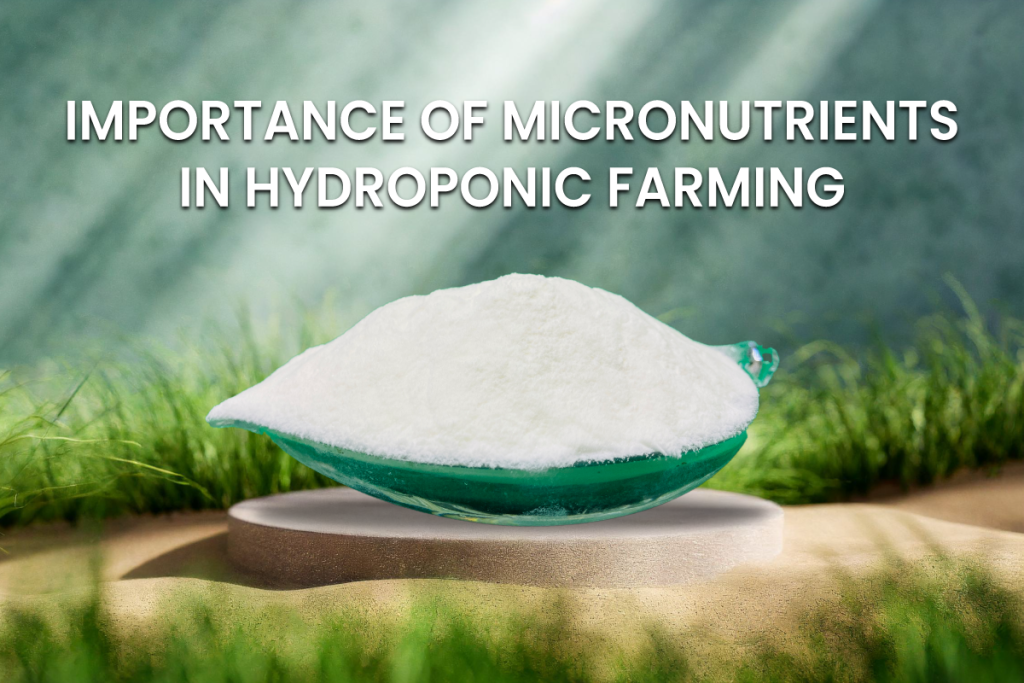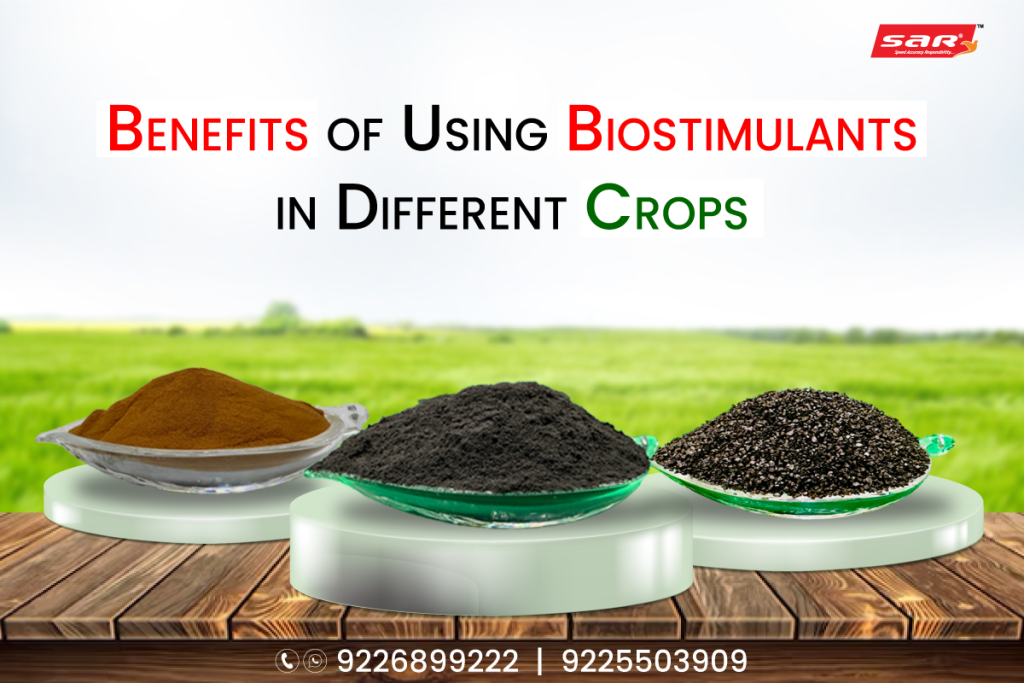
What role do micronutrients play in enhancing crop yield and quality?
Micronutrients are often overshadowed by the more general macronutrients and yet these micronutrient plant nutrients are essential for crops to grow efficiently. Macronutrients such as nitrogen, phosphorus and potassium are important for the typical growth of plants. While micro nutrients specifically Zn act as a key to catalysing many bio-chemical processes with in the plant. Control over these nutrients can make a huge difference in terms of crop yield and quality.
Micronutrients are vital elements that a plant needs in small quantities. These include:
- Boron (B)
- Chlorine (Cl)
- Copper (Cu)
- Iron (Fe)
- Manganese (Mn)
- Molybdenum (Mo)
- Nickel (Ni)
- Zinc (Zn)
Although their concentrations in plants are relatively low, their absence or deficiency can have significant impacts on crop growth, development, and overall productivity.
The Role of Micronutrients in Crop Growth
Enhancing Photosynthesis
Micronutrients such as iron and manganese are crucial for chlorophyll synthesis, the green pigment essential for photosynthesis. Improved photosynthesis leads to increased production of sugars and other vital compounds, which are critical for plant growth. Iron deficiency, for example, leads to chlorosis (yellowing of leaves), reducing photosynthetic efficiency and stunting plant growth.
Strengthening Plant Immunity
Micronutrients play a significant role in bolstering a plant’s immune system. They are involved in the production of enzymes and compounds that protect plants from diseases and pests. For instance, copper is essential for lignin synthesis, which strengthens cell walls and enhances resistance to pathogens. Zinc is involved in the production of proteins that act as defence mechanisms against various stresses.
Improving Nutrient Uptake
Micronutrients facilitate the absorption and utilization of other essential nutrients, such as nitrogen and phosphorus. For example, zinc is necessary for the synthesis of proteins involved in nitrogen metabolism. Adequate levels of micronutrients ensure efficient nutrient utilization and prevent deficiencies, leading to healthier and more productive plants.
Accelerating Growth and Development
Micronutrients are involved in various growth processes, including cell division, hormone production, and enzyme activation. Boron, for instance, is essential for cell wall formation and stability, while molybdenum is crucial for nitrogen fixation in legumes. Adequate supply of these micronutrients promotes robust plant growth and development.
Enhancing Crop Quality
Micronutrients influence the quality attributes of crops, including taste, color, and nutritional value. For example, zinc is essential for protein synthesis, affecting grain quality in cereals. Boron is crucial for fruit set and development, impacting the yield and quality of fruits and vegetables. Iron and manganese are involved in the synthesis of vitamins and antioxidants, enhancing the nutritional value of crops.
Common Micronutrient Deficiencies and Their Symptoms
Recognizing and addressing micronutrient deficiencies is essential for maintaining crop health and productivity. Here are some common deficiency symptoms:
Iron Deficiency: Characterized by chlorosis (yellowing) of young leaves, leading to reduced photosynthesis and stunted growth.
Zinc Deficiency: Symptoms include reduced growth, small leaves, and interveinal chlorosis (yellowing between leaf veins).
Manganese Deficiency: Similar to iron deficiency but often accompanied by brown spots on leaves.
Boron Deficiency: Leads to reduced growth, flower and fruit drop, and cracked stems.
Copper Deficiency: Manifests as whitish or grey spots on leaves, reduced yield, and poor overall plant health.
– Molybdenum Deficiency: Causes chlorosis and leaf curling, particularly in legumes due to impaired nitrogen fixation.
Micronutrient Application Methods
Micronutrients can be applied through various methods to ensure adequate supply and optimal plant uptake:
Soil Application
Incorporating micronutrient fertilizers into the soil before planting is a common practice. This method ensures that nutrients are available to the plant roots throughout the growing season. However, soil pH and composition can affect the availability of micronutrients, so it is essential to adjust the soil conditions accordingly.
Foliar Spraying
Applying micronutrient solutions directly to leaves allows for quick absorption and rapid correction of deficiencies. This method is particularly effective for addressing acute deficiencies during critical growth stages. Foliar spraying can also be used as a supplementary application to soil fertilization.
Seed Treatment
Coating seeds with micronutrients provides early access to essential elements during germination and initial growth. This method ensures that seedlings have a strong start, leading to better establishment and vigour. Seed treatment is especially beneficial for crops grown in soils with known micronutrient deficiencies.
Fertigation
Applying micronutrients through irrigation water (fertigation) allows for precise and uniform distribution of nutrients. This method is highly efficient and can be tailored to the specific needs of the crop and soil conditions. Fertigation is commonly used in high-value crops, such as fruits and vegetables, where micronutrient management is critical for quality and yield.
The Importance of Soil Testing
Conducting a soil test is essential for determining the micronutrient status of your soil. Soil testing provides valuable information on nutrient levels, pH, and other factors affecting nutrient availability. Based on the results, appropriate nutrient management practices can be implemented to address deficiencies and optimize crop nutrition.
Integrating Micronutrients into a Balanced Fertilization Program
To achieve optimal crop yield and quality, it is crucial to integrate micronutrients into a balanced fertilization program. Here are some key considerations:
Assessing Soil and Crop Needs
Understanding the specific micronutrient requirements of your crops and the existing nutrient levels in your soil is the first step. Different crops have varying micronutrient needs, and soil properties can significantly impact nutrient availability. Regular soil testing and plant tissue analysis can help identify deficiencies and guide nutrient management decisions.
Choosing the Right Fertilizers
Selecting the appropriate micronutrient fertilizers is essential for effective nutrient management. Options include inorganic salts (e.g., zinc sulfate, iron chelates), organic sources (e.g., compost, manure), and specialized formulations (e.g., foliar sprays, slow-release fertilizers). The choice of fertilizer depends on factors such as soil conditions, crop type, and application method.
Timing and Application Methods
The timing of micronutrient applications is critical for maximizing their effectiveness. Applying nutrients at specific growth stages, such as flowering or fruiting, can enhance their uptake and utilization. Combining soil, foliar, and fertigation methods can provide a balanced approach, ensuring that plants receive a steady supply of nutrients throughout the growing season.
Micronutrient Management in Different Crops
Cereals (Wheat, Rice)
In cereals, micronutrients such as zinc and iron are vital for grain quality and yield. Zinc deficiency is common in many cereal-growing regions, leading to stunted growth and poor grain development. Soil application of zinc sulfate, combined with foliar sprays during critical growth stages, can significantly improve yield and grain quality.
Legumes (Soybean, Chickpea)
Legumes have a unique relationship with nitrogen-fixing bacteria, making molybdenum and iron critical for their growth. Molybdenum deficiency can impair nitrogen fixation, reducing plant growth and yield. Seed treatment with molybdenum, along with soil and foliar applications, ensures adequate nutrient supply for optimal legume production.
Fruits and Vegetables (Tomato, Citrus)
Fruits and vegetables require a balanced supply of micronutrients for quality and yield. Boron and calcium are particularly important for fruit set and development. Boron deficiency can lead to poor fruit development and quality issues. Soil and foliar applications of boron, along with calcium, can enhance fruit quality and yield.
Advancements in Micronutrient Research and Technology
Advancements in research and technology are continually improving micronutrient management in agriculture. Precision agriculture tools, such as remote sensing and GIS mapping, allow for accurate assessment of nutrient status and targeted applications. Development of new fertilizer formulations, such as nano-fertilizers and slow-release products, provide more efficient and sustainable nutrient delivery systems.
Conclusion
Micronutrients, though required in small quantities, are indispensable for optimal crop growth, yield, and quality. By understanding their role and addressing deficiencies through proper application methods, farmers can significantly enhance crop productivity and quality. Integrating micronutrients into a balanced fertilization program, guided by regular soil testing and plant analysis, is essential for sustainable and profitable agriculture. As research and technology continue to advance, the importance of micronutrients in crop nutrition will become increasingly evident, driving further improvements in agricultural practices and outcomes.

